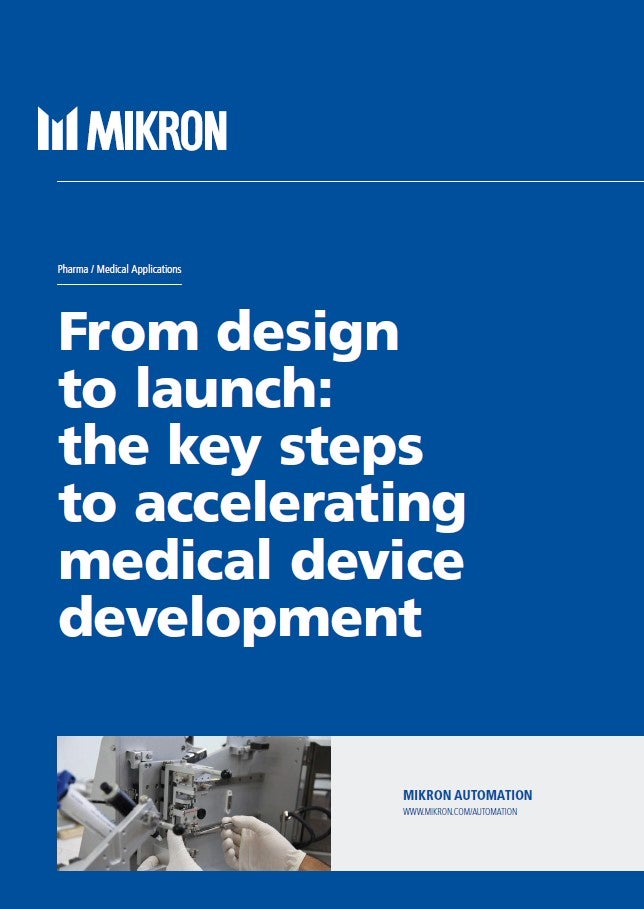
Medical Technology is now available on all devices! Read it here for free in the web browser of your computer, tablet or smartphone.
It’s been little over a century since plastic surgery emerged as a treatment for wounded soldiers in WWI. While the general concept remains the same, technology has completely revolutionised the possibilities of reconstructive surgery. To find out more, we explore the arsenal of sophisticated systems and devices being used in plastic surgery.
How well do you really know your competitors?
Access the most comprehensive Company Profiles on the market, powered by GlobalData. Save hours of research. Gain competitive edge.

Thank you!
Your download email will arrive shortly
Not ready to buy yet? Download a free sample
We are confident about the unique quality of our Company Profiles. However, we want you to make the most beneficial decision for your business, so we offer a free sample that you can download by submitting the below form
By GlobalDataAlso in this issue, we examine a new adhesive that could replace traditional sutures, explore efforts to improve access to women-specific medical innovations in Asia, and review a new technique that allows researchers to 3D print living skin complete with blood cells, which could transform skin grafts.
Plus, we investigate the potential of deep brain stimulation in the treatment of mental illness, dive into the complex subject of regulating medical devices in India, and debate plans to have newborns in the UK receive whole genome sequencing at birth.
Finally, we find out how the US FDA plans to rehabilitate non-compliant device manufacturers, and get the latest insight, innovation trends and analysis from GlobalData.
In this issue
How is technology transforming facial reconstruction surgery?
For patients in dire need of facial reconstructive surgeries, the advanced and detailed methods of repairing craniofacial anomalies and injuries can be life changing. But, what role has technology played in this transformation and how is it being used to treat patients in modern day operating theatres? Abi Millar reports.
Read more.
Spider silk: a sticky solution to traditional sutures
In a flash of arachnid inspiration, researchers have copied the structure of spider silk to develop a double-sided tape which can tightly bind flesh tissues in mere seconds. The tape could eventually be used in the place of surgical sutures or to implant medical devices – so what is it made from, and how does it work? Chloe Kent reports.
Read more.
Diverse diagnostics: why ‘one size fits all’ doesn’t always work
Molecular diagnostics company Inex Innovate focuses on conditions that specifically affect women. CEO Kane Black talks to Natalie Healey about broadening access to non-invasive health tests and finding more accurate ones for Asian populations.
Read more.
3D-printed living skin: the future of skin grafts?
Researchers from the Rensselaer Polytechnic Institute have developed a way to 3D-print living skin, complete with blood vessels. It’s an advancement that has been hailed as a step towards creating artificial grafts that appear and behave like natural skin. Chloe Kent takes a look at this development and the tech helping to improve skin grafts.
Read more.
From ECT to TDCS: how can brain stimulation treat mental illness?
First-line treatment for mental health conditions like depression and anxiety typically involves a combination of pharmaceutical interventions and talking therapies, but patients can struggle to tolerate drugs and therapy can be hard to access. Brain stimulation is now emerging from the fringes as an increasingly popular means of treating these conditions at home – but what are the different types available, and how do they work? Chloe Kent finds out.
Read more.
Devices are not drugs: rethinking medical device regulation in India
The Indian medical device industry is the fourth-largest in Asia, but the country does not have a specific regulatory process for these complex, unique products, and instead chooses to assess them as drugs. Allie Nawrat talks to AiMeD forum coordinator Rajiv Nath about the inadequacy of the current situation and how it should be resolved.
Read more.
Genome sequencing at birth: sophisticated care or ethical nightmare?
UK secretary of state for health and social care Matt Hancock plans for the NHS to start offering genome sequencing at birth alongside routine health checks. Genomics England is running the programme in a pilot form in 2020, and it could be widely available in as few as three years. Could this be the next frontier in modern medicine, or is it a huge breach of personal privacy? Writers Chloe Kent and Chris Lo present the cases for and against.
Read more.
Back to compliance: MDIC extends a helping hand to struggling manufacturers
The US Food and Drug Administration has provided $2.8m in funding for the Medical Device Innovation Consortium to expand its Case for Quality Voluntary Improvement Program to device manufacturers with a history of quality violations. But, how will the process work, and how could the extra scrutiny bring non-compliant facilities back into the FDA’s good graces? Chloe Kent finds out.
Read more.
Next issue preview
In the next issue of Medical Technology, we take a look at the growing number of health tech incubators emerging to support start-ups in the industry and examine an unusual addition to the gift bags distributed at this year’s Academy Awards ceremony – a single-use, mid-stream urine collection device for diagnosing urinary tract infections.
Also, we review the companies poised to secure a piece of the robotic surgery market as Intuitive Surgical’s patents expire, find out how supercooling could help to extend the lifespan of human livers outside of the body, and round up key developments set to shake up the photonics market.
Plus, we learn how virtual workers and automation are transforming the NHS, explore ways that VR is being used to treat patients with visual impairments, and speak to HistoSonics about a new procedure called robotically assisted sonic therapy, which is designed to treat cancer.




